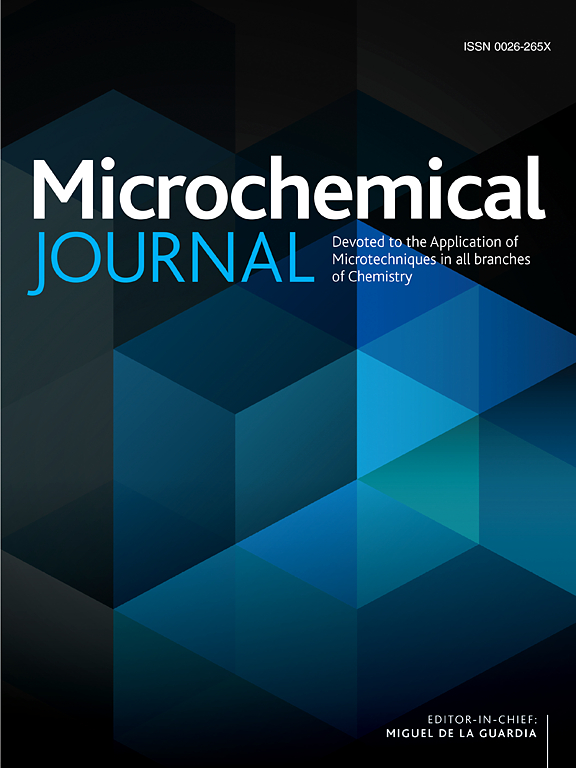Novel economical adsorbents employed as stationary phases in column chromatography for pollution removal
IF 4.9
2区 化学
Q1 CHEMISTRY, ANALYTICAL
引用次数: 0
Abstract
The aim of this study is to fabricate activated carbon (AC) and medium-pore silica (mSiO₂) as economical adsorbents which is used as stationary phases in column chromatography for removing methylene blue (MB) dye from wastewater. Firstly, AC and MB were characterized using FTIR, XRD, BET, and SEM techniques. The evaluation of the outstanding adsorption ability of AC with the distinct characteristics of mSiO₂, such as its large surface area and pore volume, to remove methylene blue (MB). The findings indicate removal efficiency: mSiO₂ attained a peak removal rate of 95.50 % at a flow rate of 5 mL/min and a dye concentration of 5–25 μg/mL, whereas AC showed superior efficiency (97 %) under the same conditions. The heterogeneous surface of mSiO₂ is more effectively described by Freundlich. Langmuir occurs for AC, suggesting monolayer adsorption. The adsorption of MB on AC and mSiO₂ displays pseudo-second-order kinetics, showing chemisorption processes. Due to their cost-effectiveness, higher performance, and low chemical waste production, both materials offer a viable and sustainable approach to wastewater treatment from MB. This process matches with environmental sustainability objectives and provides a scalable to remove other contaminants.

新型经济吸附剂作为固定相用于柱层析去除污染
本研究的目的是制备活性炭(AC)和中孔二氧化硅(msio2)作为经济的吸附剂,作为固定相用于柱层析法去除废水中的亚甲基蓝(MB)染料。首先,利用FTIR、XRD、BET和SEM等技术对AC和MB进行了表征。评价AC具有明显的mSiO₂的特性,如其大的表面积和孔体积,对亚甲基蓝(MB)的去除能力。结果表明:在5 mL/min的流速和5 - 25 μg/mL的染料浓度下,mSiO 2的去除率达到95.50%,而在相同的条件下,AC的去除率达到97%。Freundlich更有效地描述了msio2的非均相表面。AC发生朗缪尔反应,表明是单层吸附。MB在AC和msio2上的吸附表现为准二级动力学,表现为化学吸附过程。由于其成本效益,更高的性能和低的化学废物产生,这两种材料都为MB废水处理提供了可行和可持续的方法。该过程符合环境可持续性目标,并提供了可扩展的方法来去除其他污染物。
本文章由计算机程序翻译,如有差异,请以英文原文为准。
求助全文
约1分钟内获得全文
求助全文
来源期刊

Microchemical Journal
化学-分析化学
CiteScore
8.70
自引率
8.30%
发文量
1131
审稿时长
1.9 months
期刊介绍:
The Microchemical Journal is a peer reviewed journal devoted to all aspects and phases of analytical chemistry and chemical analysis. The Microchemical Journal publishes articles which are at the forefront of modern analytical chemistry and cover innovations in the techniques to the finest possible limits. This includes fundamental aspects, instrumentation, new developments, innovative and novel methods and applications including environmental and clinical field.
Traditional classical analytical methods such as spectrophotometry and titrimetry as well as established instrumentation methods such as flame and graphite furnace atomic absorption spectrometry, gas chromatography, and modified glassy or carbon electrode electrochemical methods will be considered, provided they show significant improvements and novelty compared to the established methods.
 求助内容:
求助内容: 应助结果提醒方式:
应助结果提醒方式:


